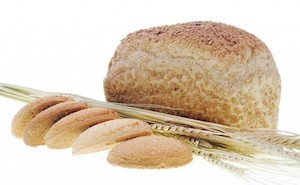 There are many diets out there that encourages low carbohydrates or no carbohydrates for weight loss. The truth is, carbohydrates are not as evil as you think they are. In fact, for sustained weight management, it is more effective to have a balanced proportion of carbohydrates, protein and fats rather than having too much of one.
There are many diets out there that encourages low carbohydrates or no carbohydrates for weight loss. The truth is, carbohydrates are not as evil as you think they are. In fact, for sustained weight management, it is more effective to have a balanced proportion of carbohydrates, protein and fats rather than having too much of one.
So why does carbohydrates have such a bad name? Well, it is because not all carbohydrates are created equally. For successful weight and health management, you should focus on substituting most of your carbohydrates intake with Low Glycemic Index (GI) foods.
What is GI?
The glycemic index (GI) is a numerical value that was developed as a practical and objective measure of the relative glycemic impact (i.e., effect on blood glucose levels in humans) of different foods
In the medical and scientific circles as “An indicator of the ability of different types of foods that contain carbohydrate to raise the blood glucose levels within 2 hours”.
What is considered high or low GI?
Whether a food has high or low GI is actually arbitrary in the sense that there are individual differences in response to the different foods.
However, as a general guide,
Low GI = 35 or less
Intermediate GI = 35-50
High GI = greater than 50
This is bearing in mind that a food of GI 50 may be high for A but intermediate for B due to their different insulin sensitivity (how fast blood glucose level change)
List of the Best Low GI Carbohydrate Sources
Generally processed carbs like white rice and white bread are very high in GI. Do consider replacing them with the list of foods below
| Name Of Food | GI | Portion Size | Carbs | GL |
| Chana Dal | 10 | 1/2 cup, cooked | 17 | 2 |
| Beans, Common | 20 | 1/2 cup, cooked | 14 | 3 |
| Barley, hull-less* | 22 | 1/2 cup, boiled | 21 | 5 |
| Lentils | 29 | 1/2 cup, cooked | 24 | 7 |
| Soba Noodles | 35 | 1 cup, (al dente) | 25 | 9 |
| Plantains, Green | 40 | 2 avg. tostones | 22 | 9 |
| Pasta, whole wheat* | 40 | 1 cup, (al dente) | 25 | 10 |
| Split Peas, Green | 48 | 1/2 cup, cooked | 20 | 10 |
| Brown Rice, Long Grain | 50 | 1/2 cup, cooked | 21 | 10 |
GI – Glycemic Index (glucose=100)
Carbs – Net Available Carbs in grams (total carbs minus fiber)
GL – Glycemic Load of specified serving size
* Contains Gluten
Source: http://www.low-glycemic-foods.org/best-carbs.html
So why low GI?
Low GI foods raise your blood glucose level at a much slower rate compared to high GI foods, which means your blood glucose level will be kept quite consistent, and you’ll feel more energetic and you’ll also stay full for a longer period after eating.
With high GI foods, chances are you will experience “food coma”, which happens after your blood glucose level crashes after a spike. On top of that, you’ll feel hungry easily and end up eating more than you need.
By keeping your blood glucose level consistent, you will also be burning fat more effectively throughout the day. This is because when there is a blood glucose spike, your body will think there’s plenty of energy and shut down the fat burning process.
Conclusion
Maintain a balanced proportion of your macro-nutrients is important and the key to sustainable weight and health management is really about making the right carbohydrate choices. And, it is not as difficult as you think it is! Cut out the whites today!
To look at the comprehensive list of foods and their GI values, go here.
